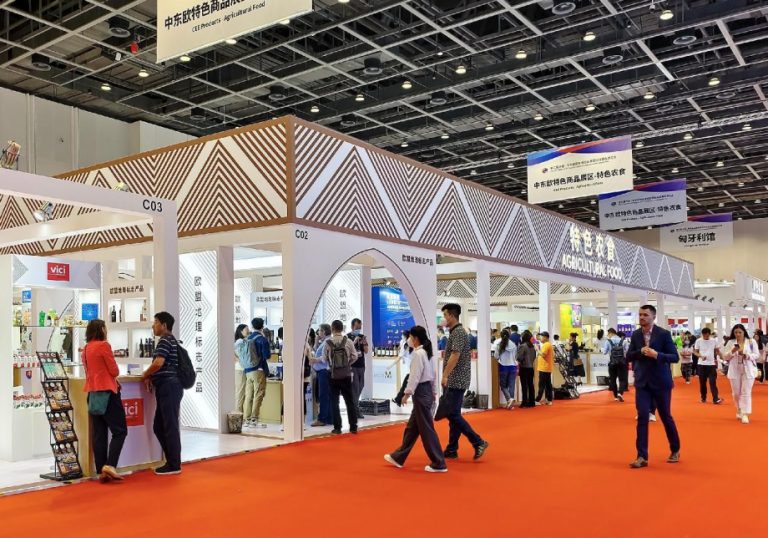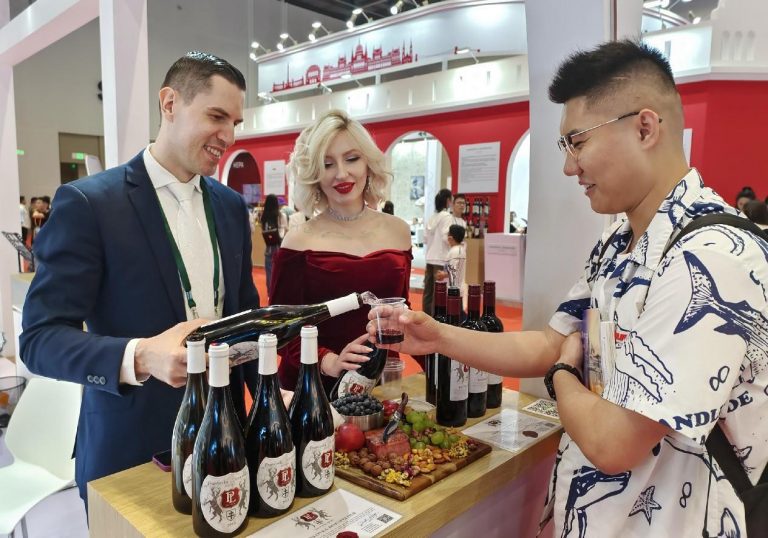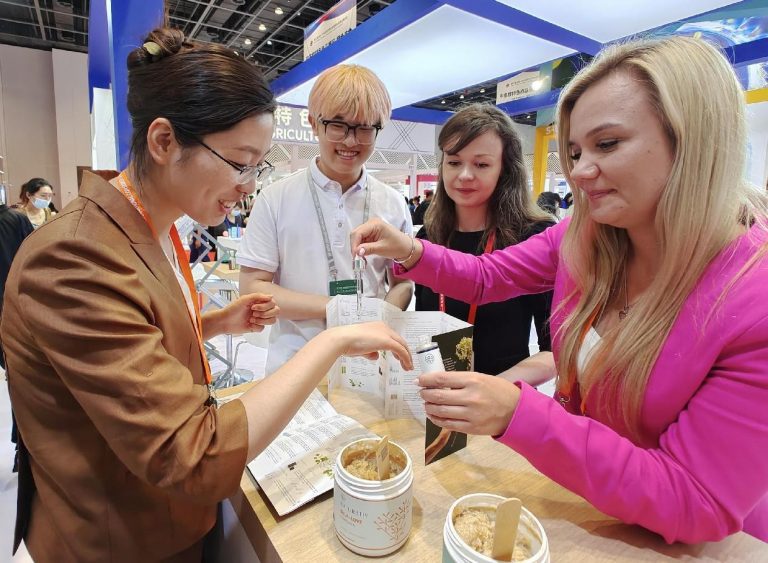
By Yang Xun, Gu Chun, Luo Shanshan, Liu Junguo, People’s Daily
The third China-Central and Eastern European Countries (CEEC) Expo & International Consumer Goods Fair was held in Ningbo, east China’s Zhejiang province, from May 16 to 20.
The expo has become a major platform that displays featured CEEC products and expands China’s imports from these countries. It is steering the two sides toward high-quality economic and trade cooperation.
Hungarian noble rot wine, ouzo from Greece, and a series of other commodities under the EU geographical indications system were exhibited at the expo. Dazzling exhibits, including foldable Slovenian skis and fragrant Bulgarian rose essential oil, attracted visitors’ attention.
It is reported that over 5,000 kinds of commodities from CEECs joined the exhibition, up 25 percent from a year ago. About 3,000 exhibitors participated in the event, a record high in history.
“These are biscuits and chocolate candies that have been accompanying us since childhood. Please have a try,” said Dominik Pekalski, import-export manager of a trading company that has been engaged in China-Poland trade for over 15 years, when introducing commodities to visitors at the booth of Polish pastry brand Skawa during the China-CEEC Expo.

He said the Chinese consumer market is highly open and energetic, and his company is currently working to introduce more Polish products to the Chinese market.
“We have achieved remarkable performance through e-commerce platforms and other channels. We are here at the expo to seek more opportunities in the Chinese market,” Pekalski told People’s Daily.
A total of 62 foreign-funded projects were signed during the expo, with a total investment of $17.78 billion, up 17.7 percent year-on-year.
Among all the projects, 17 were invested by Fortune Global 500 companies and industry-leading enterprises, covering high-end equipment manufacturing, biomedicine, digital economy, and other frontier areas.
The expo was also attended by 15,000 professional purchasers and received 126,000 visits, and 10.53 billion yuan ($1.5 billion) of purchase orders for CEEC goods were reached, hitting historical highs.
This year marks the beginning of the second decade of China-CEEC cooperation. Under joint efforts from relevant parties, the two sides have achieved fruitful economic and trade cooperation results.
According to statistics released by China’s Ministry of Commerce, bilateral trade between China and CEECs has grown at an average annual rate of 8.1 percent since the founding of the China-CEEC cooperation mechanism in 2012. China’s imports from CEECs have increased at an average rate of 9.2 percent annually during the same period.
Jiang Yu, special representative of the Ministry of Foreign Affairs for China-CEEC Cooperation Affairs, noted that China would firmly pursue a mutually beneficial strategy of opening up, comprehensively promoting high-quality development and a high-level introduction, and keep sharing new opportunities for China’s development with CEEC.
China and CEEC, assisted by infrastructure connectivity, are seeing more efficient logistics between the two sides.
The Zhoushan Port in Ningbo has established cooperation mechanisms with five ports from CEECs, including the Piraeus Port in Greece, the Port of Gdansk in Poland, the Constanta Port in Romania, the Port of Koper in Slovenia, and the Croatian Rijeka port. Fourteen container shipping routes have opened in total.

Last year, 769,000 twenty-foot equivalent units of containers were shipped between the Zhoushan Port and the five CEEC ports, up 16.5 percent year-on-year.
The China-Europe freight train service hailed as an artery of freight transportation between China and Europe, was a hot topic during the China-CEEC Expo.
Lin Huihuan, general manager of a logistics company based in Yiwu, Zhejiang province, told People’s Daily that more and more clients of his company are willing to ship cargo to China through the Yixin’ou (Yiwu-Xinjiang-Europe) route thanks to its low cost and stable capacity.
According to Lin, Yiwu has launched 18 point-to-point international lines to Central Asia and other regions, on which 1,569 trips were made last year.
“It is believed that the number will keep growing as the trade volume between China and CEECs continues to expand,” Lin said.
This year marks the 10th anniversary of the China-proposed Belt and Road Initiative. Over the past ten years, China-CEEC cooperation on infrastructure has achieved new heights. This initiative has implemented and completed A series of projects, including Montenegro’s Bar-Boljare Highway and the Belgrade-Budapest railway.
Croatian official Ranko Ostojic said the BRI had brought drastic changes to his hometown, citing the Peljesac Bridge as an example. The bridge facilitates local transport and creates a better life for the community, he explained. Marko Selakovic, the advisor to the mayor of Kragujevac, Serbia, said the China-CEEC Expo was a high-standard, high-quality, high-level economic and trade event. He hopes the potential of China-CEEC cooperation could be constantly released.










